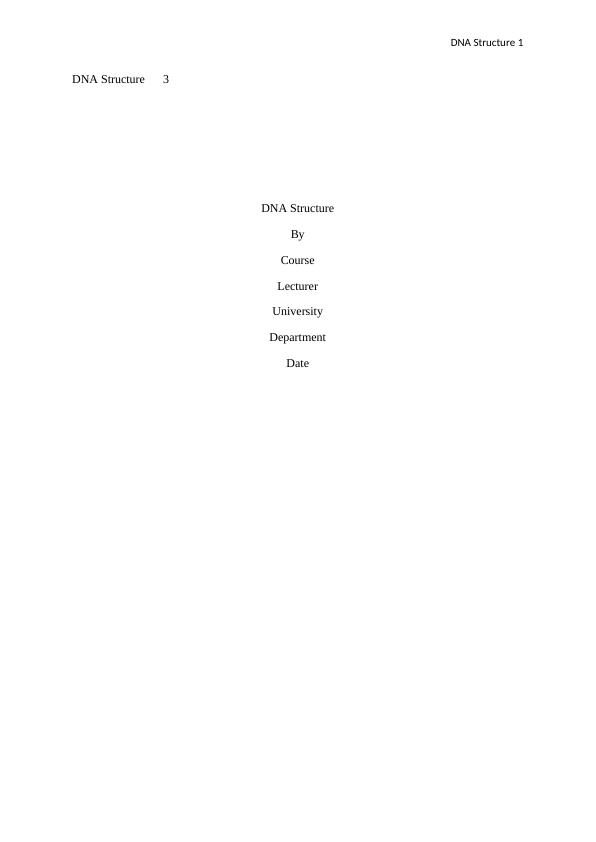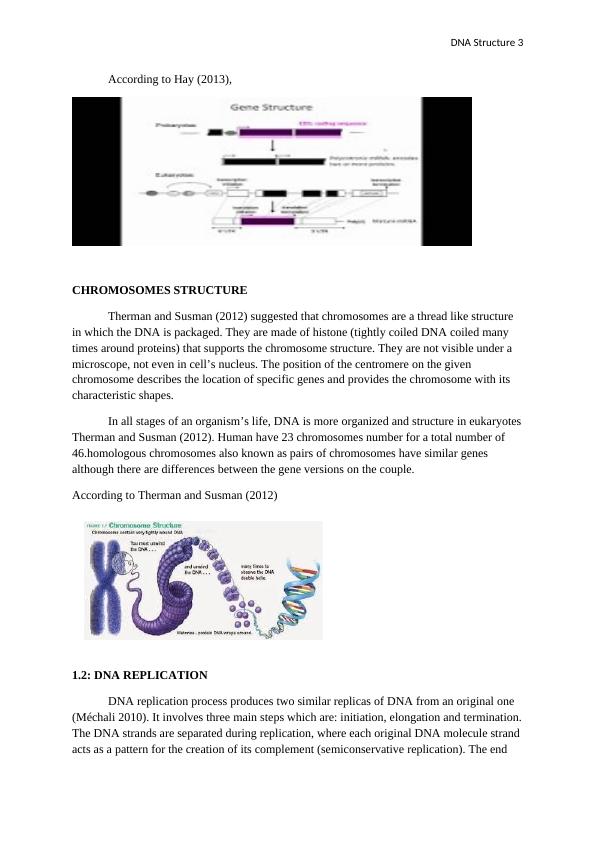DNA Structure: Genes, Chromosomes, Replication, Mitosis and Meiosis
7 Pages1725 Words433 Views
Added on 2023-05-31
About This Document
This article explains the structure of DNA, genes, and chromosomes. It also covers DNA replication, mitosis, and meiosis. The importance of meiosis in generating variation is also discussed. The article cites relevant studies and research to support the information presented.
DNA Structure: Genes, Chromosomes, Replication, Mitosis and Meiosis
Added on 2023-05-31
ShareRelated Documents
End of preview
Want to access all the pages? Upload your documents or become a member.
Assignment on Genetics (PDF)
|6
|707
|255
Introduction to DNA and Genetics Assignment
|9
|2657
|410
Functions of Nucleic Acids in Living System Report
|5
|845
|166
Genetic Materials and Mechanisms: DNA, Genes, Chromosomes, Mitosis, Meiosis
|11
|2279
|257
Protein Synthesis and Nucleic Acids in Human Genetics
|9
|2234
|96
Cell Biology: Nucleic Acids, Protein Synthesis, Embryonic Stem Cells, Cell Division, and Cancer Cells vs Normal Cells
|11
|2493
|377



